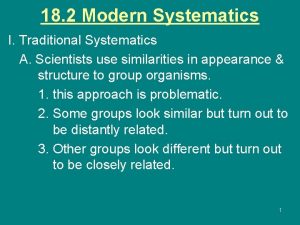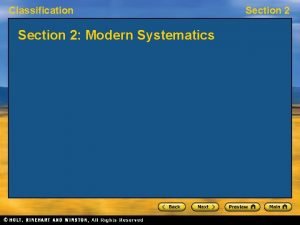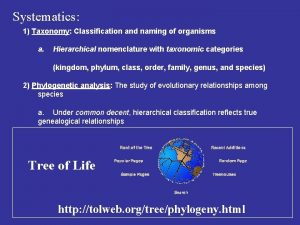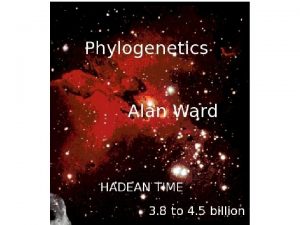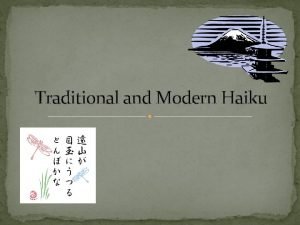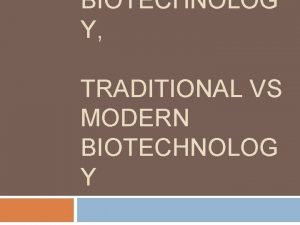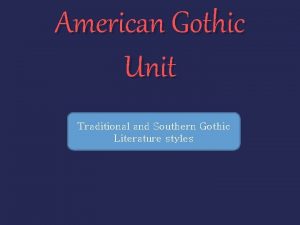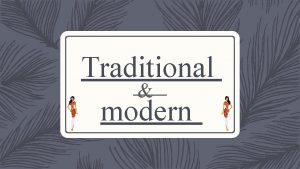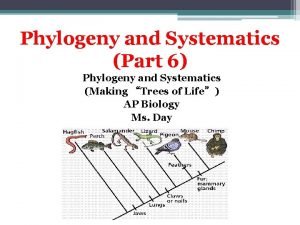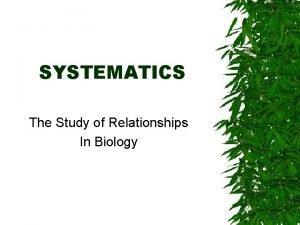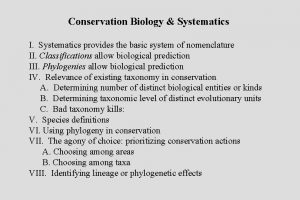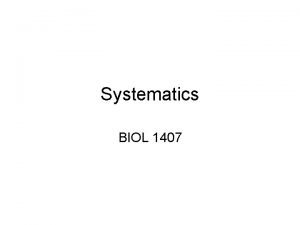18 2 Modern Systematics I Traditional Systematics A








- Slides: 8

18. 2 Modern Systematics I. Traditional Systematics A. Scientists use similarities in appearance & structure to group organisms. 1. this approach is problematic. 2. Some groups look similar but turn out to be distantly related. 3. Other groups look different but turn out to be closely related. 1

II. Phylogenetics A. Def – The study of the ancestral relationships between species. B. It’s like trying to draw a huge family tree over millions of generations. C. Not all similar characteristics are inherited from a common ancestor. 1. Ex. -wings of an insect & the wings of a bird. D. Convergent evolution = similarities in groups that are not closely related. 2

2. Analogous characters = Similarities that arise through convergent evolution. E. This family tree, or phylogenetic tree, represents a hypothesis of the relationships between several groups. III. Cladistics A. Objective method that unites systematics with phylogenetics. 1. Focuses on finding characters that are shared between different groups because of shared ancestry. 3

2. Ancestral character is defined as having evolved in a common ancestor of both groups. 3. Derived character = one that evolved in one group but not the other. C. Constructing a Cladogram 1. A cladogram is a phylogenetic tree that is drawn in a specific way. 2. A clade is a set of groups that are related by descent from a single ancestral lineage. 3. Outgroup = group that lacks some of the shared characteristics. 4

5

IV. Inferring Evolutionary Relatedness A. Morphology 1. refers to the physical structure or anatomy of organisms. 2. Organisms that share ancestral genes often show similarities during development. B. Molecular Evidence 1. Scientists now use genetic information to infer phylogenies. 2. DNA bases in a gene is determined for several species 3. Then, each letter at each position is compared. 6

7

C. Evidence of Order and Time 1. Cladistics can determine only the relative order of divergence, or branching, in a phylogenetic tree. 2. The fossil record can often be used to infer the actual time when a group may have begun to “branch off. ” D. Inference Using Parsimony 1. This principle holds that the simplest explanation for something is the most reasonable, unless strong evidence exists against that explanation. 2. Given two possible cladograms, the one that implies the fewest character changes between points is preferred 8
